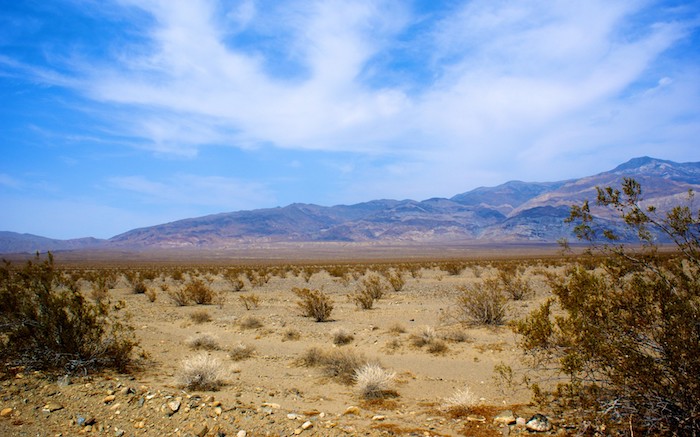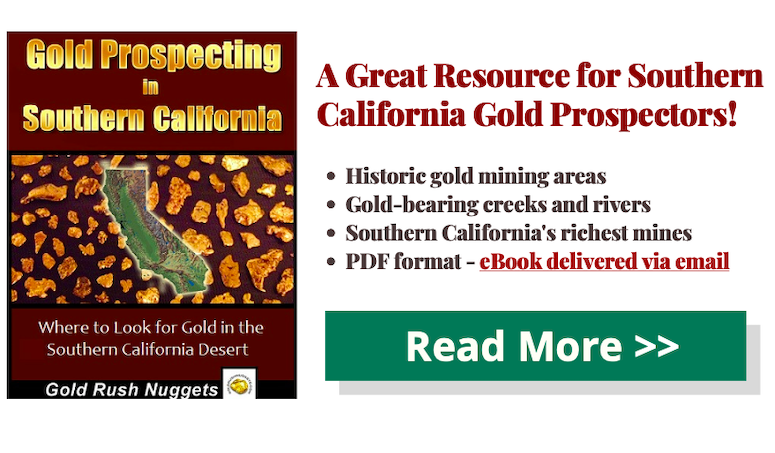
The Mojave Desert is large and unforgiving region in Northwestern Arizona, Southern California and Southern Nevada. Throughout its vast 50,000-mile territory, it has only one river, the Colorado River. The water that pours from rains is barely enough to keep the scanty flora of this region alive. The desert is bordered by high mountain ranges. You would have to wonder as to why would people be so eager to traverse this desolate area and populate it. Back in the 1800s the reason was simple.
Gold.
Mining in Mojave was not so Simple
The Mojave Desert owes its name to local Indian tribes who lived in its eastern part along the Colorado River. Mojave meant ‘Beside the water’ in their language and since then even after the Spanish colonized those places, the name stayed. People had first found gold along the Colorado River as early as the 18th century. The gold here was very fine and never spurred much interest as it was difficult to accumulate any quantity.
The mining was mostly small scale for a time and the California Gold Rush in the 1850s took all the attention away from the Mojave Desert. This was simply a place to pass through as quickly as possible to get to more promising areas.
As the Mother Lode depleted, people began to return to Mojave in search of more gold. Suddenly there were thousands of men exploring the West, in search of the next big gold rush.
Naturally, people tried to look for gold sources close to water. Gold discoveries started to be made in the Mojave Desert throughout the 1800s, most of them situated relatively close to the Colorado River. Some of them were the most notable and defined gold processing in the region.
Prospecting gold further into the desert was also possible but too hard to be done on a large scale. Many individual prospectors found gold throughout the Mojave, but they were simple operations involving little more than basic hand tools. Mining the desert was hard in this area.
Mining towns of Southern California
The Dale Mining district was formed as people had found gold in the nearby Pinto Mountains southeast of Twentynine Palms. In 1884, a town called Dale was constructed around a big well dug to provide water for livelihood and mining.
In just 5 years, there were more than 3,000 prospectors working the mines in the nearby mountains. Dale got so rich that it could install pumps to provide water straight to the mines. That made the necessity of being near the well obsolete, so the town actually moved six miles to the south. New Dale (Dale was called that after moving only 6 miles) existed at the expense of the mines until 1917 when the gold began diminishing and people began to leave. By the end of the World War II, Dale was completely abandoned as were the mines.
Right now this place is becoming popular with people who hunt for gold as a hobby. The dry washes still hold plenty of gold which can be found using drywashers. Some areas also produce nuggets allowing prospectors to use metal detectors.
Mining towns of Arizona
In northwest Arizona, the center of mining was close to the Colorado River. There were quite a few towns along the river, most of them connected with the Black Mountains.
The biggest one was called Oatman, named after Olive Oatman, a girl who was captured by Indians and spent five years with them only to be returned near the site of the future town of Oatman. In 1904, first mines were founded there and the processing quickly grew from $3 million up to $13 million annually. For a long time, Oatman was the biggest and richest settlement in Arizona. It had its problems, of course, such as a great fire in 1921 which destroyed more than half of the buildings.
Gold was depleted in the 1930s and Oatman became a small town using its history and a good location near Route 66 as a tourist attraction. There were other smaller towns too. For example, Union Pass, which was only 12 miles away from Oatman towards the northwest. It wasn’t as big and rich, earning only $1 million during its prime.
There was also the town of Chloride which is not far from Oatman to the north. Gold was found here in 1863 but the town could not be founded for almost ten years due to Indian tribes, whose territories were compromised by the prospectors mining there.
However, the Indians were pushed back and Chloride was constructed in a matter of years. It was not as big as Oatman too. Twice as small during its prime, in fact. In 1917 the Gold Rush was over and Chloride population plummeted. It is only a small rural town right now, lucky not to be abandoned completely.
The King Tut Mine was a major producer. Gold Basin is another area that prospectors still hunt even today. There are many areas worth prospecting around the Lake Havasu and Kingman.

Some tips for hunting gold in the Mojave Desert
The Mojave Desert attracts many tourists and people who like to hunt for gold. However, processing gold in this dry desert is not done as usual. This means that you can’t use placer processing since there is likely not water. You can ,theoretically, dry pan the sand but it is a tedious and unproductive endeavor.
The most productive way to find gold in the Mojave Desert is using a metal detector, especially in the aforementioned places, where considerable nuggets are proven to be. This desert has produced some large nuggets in the past, and there are many more left to find.
Another way to mine placer gold without water is a method called dry washing. A dry washer is a special device which is quite similar to a sluice box. It is also a container with special ribs to separate heavier gold from the lighter gravel but the moving force is different. In a sluice box, the current of water moves the gravel but in a dry washer, the gravel is moved using air. At first, dry washers were powered by hand using bellows to puff the air and move the gravel but then electrical fans were installed to increase performance and avoid manual labor.
So, get yourself a dry washer or a metal detector, be sure to get lots of water and other supplies and you are ready to start hunting!
Next: Metal Detecting for Gold Nuggets in Arizona
Also Read: Gold in Arizona’s Sonoran Desert
